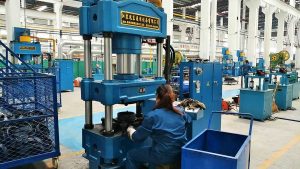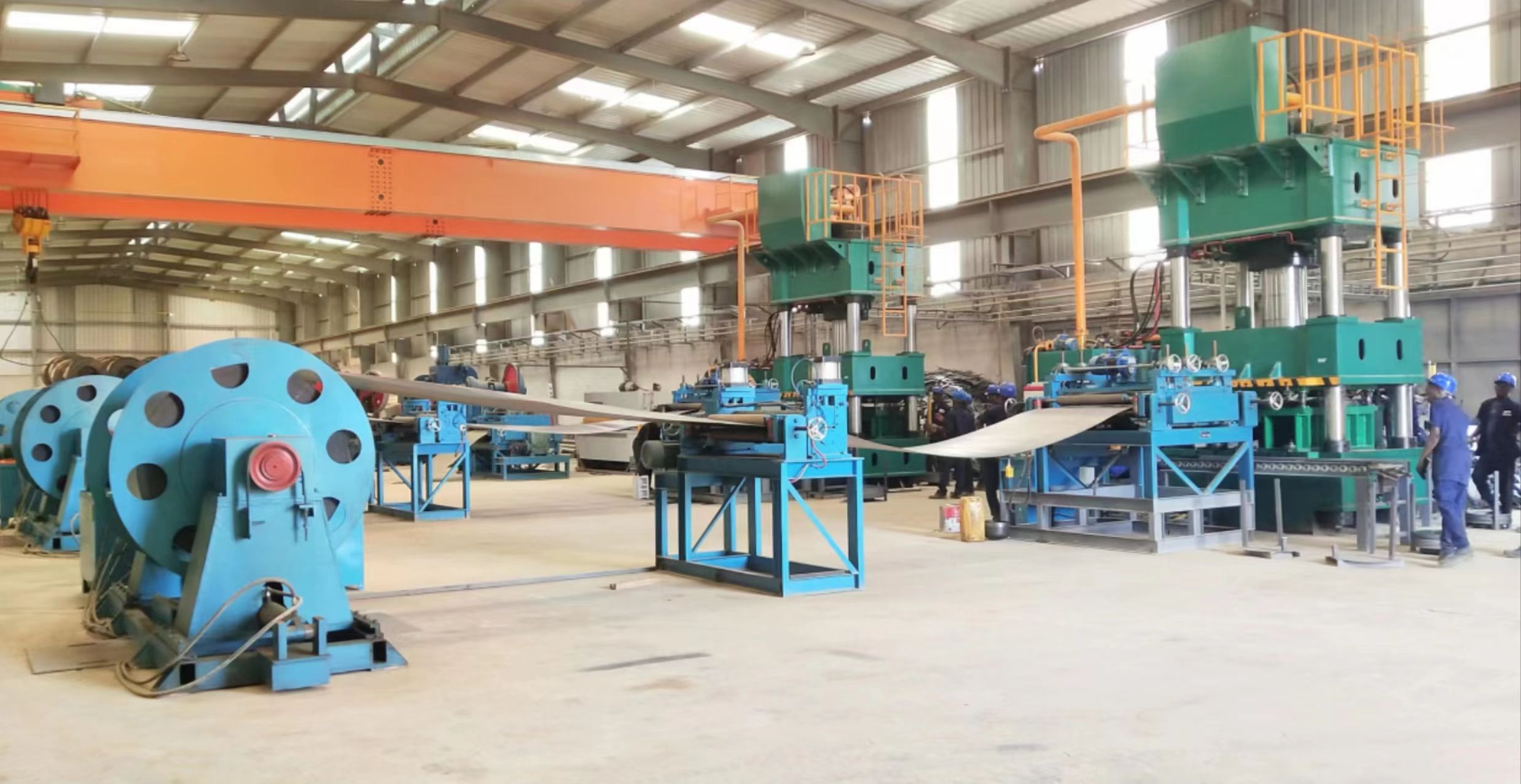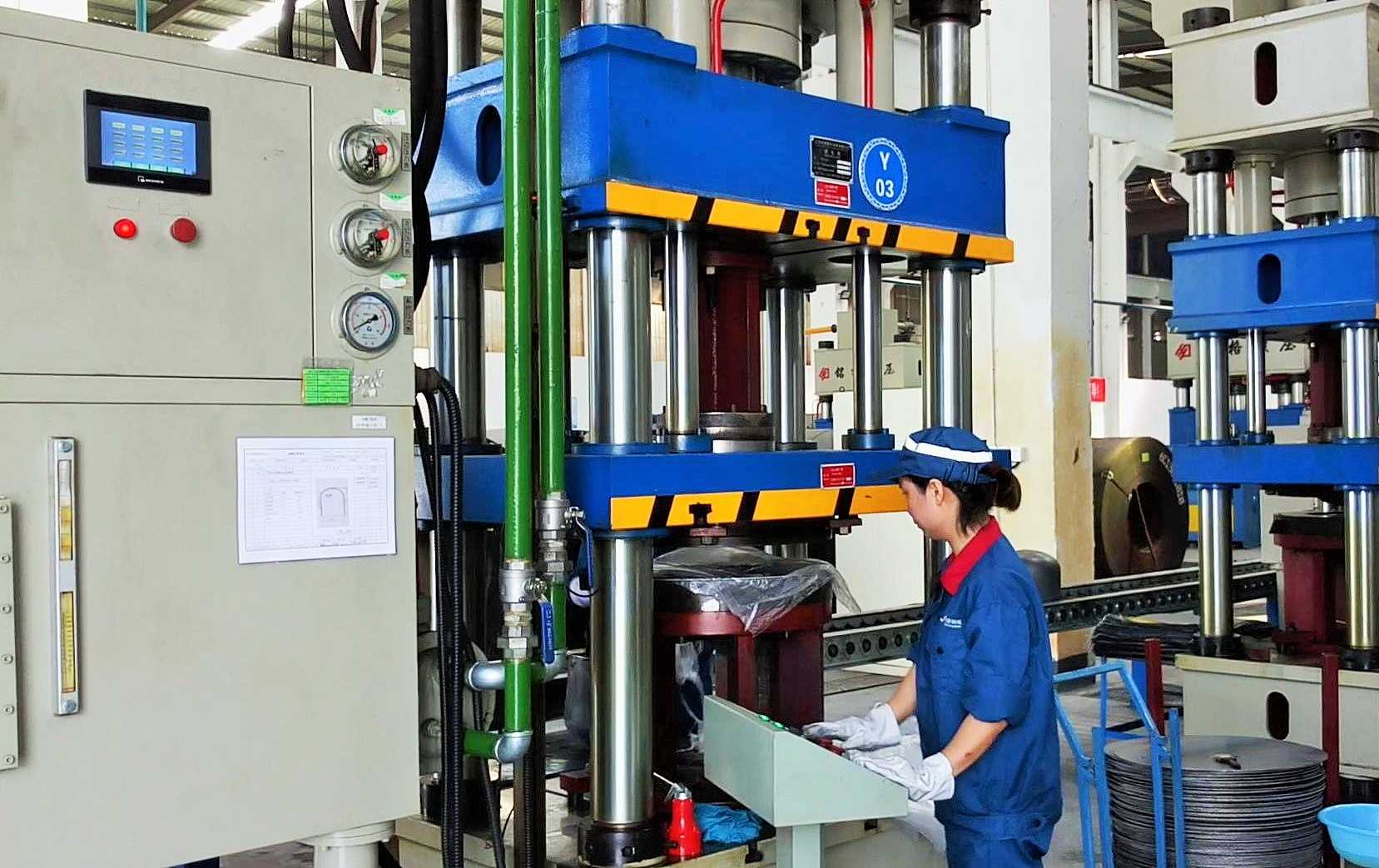In today’s world, the demand for liquefied petroleum gas (LPG) is ever-increasing. From domestic kitchens to industrial applications, LPG is a crucial source of energy. Ensuring the availability of high-quality LPG cylinders is paramount to meet this demand safely and efficiently. This is where LPG cylinder manufacturing machines come into play. These machines are at the heart of producing the robust, safe, and reliable cylinders that transport and store LPG. In this article, we will delve into the intricacies of LPG cylinder manufacturing machines, exploring their components, functions, and the significance they hold in the LPG industry.
The Importance of LPG Cylinders
Before diving into the specifics of the machinery, it is essential to understand the significance of LPG cylinders. LPG, being a highly flammable substance, requires safe and secure storage and transportation solutions. Cylinders provide this solution by containing the gas under high pressure. A compromised cylinder can lead to disastrous consequences, including explosions and fires. Hence, the quality and integrity of LPG cylinders are non-negotiable. This necessity for safety and reliability underpins the development and use of sophisticated LPG cylinder manufacturing machines.
Overview of LPG Cylinder Manufacturing
The manufacturing of LPG cylinders is a complex process that involves multiple stages. Each stage is critical to ensure the cylinder’s durability, safety, and compliance with stringent industry standards. The process can be broadly categorized into the following steps:
- Raw Material Preparation
- Cylinder Body Formation
- Heat Treatment
- Machining and Threading
- Assembly
- Testing and Inspection
- Painting and Finishing
Each of these steps requires specialized machinery and precision to produce a high-quality LPG cylinder. Let’s explore each stage in detail and understand the role of manufacturing machines in these processes.
1. Raw Material Preparation
The first step in the manufacturing process involves the preparation of raw materials. Typically, LPG cylinders are made from high-quality steel. The raw steel sheets are carefully selected and inspected for any defects that could compromise the cylinder’s integrity. The preparation process involves cutting the steel sheets into the desired dimensions using cutting machines, which can include laser cutters, plasma cutters, or mechanical shears.
2. Cylinder Body Formation
Once the raw materials are prepared, the next step is to form the cylinder body. This is one of the most crucial stages in the manufacturing process. The process begins with the deep drawing of steel sheets into cylindrical shapes. Deep drawing presses, equipped with specialized dies, are used for this purpose. These presses apply immense pressure to shape the steel into a cylinder, ensuring uniform wall thickness and structural integrity.
Following the deep drawing process, the cylinders undergo a series of welding operations. The two halves of the cylinder, typically the upper and lower parts, are welded together using automated welding machines. This step is critical as it ensures the cylinder is airtight and can withstand high internal pressures.
3. Heat Treatment
After the body formation, the cylinders undergo heat treatment. This process involves heating the cylinders to a specific temperature and then cooling them rapidly. Heat treatment enhances the mechanical properties of the steel, making it stronger and more resistant to stress and fatigue. Specialized heat treatment furnaces are used for this purpose, and the process parameters are meticulously controlled to achieve the desired properties.
4. Machining and Threading
Once the cylinders are heat-treated, they undergo machining and threading operations. This stage involves creating precise threads on the cylinder neck, where the valve will be attached. CNC (Computer Numerical Control) machines are commonly used for this purpose due to their precision and consistency. The threading process must be accurate to ensure a leak-proof seal when the valve is attached.
5. Assembly
The assembly stage involves attaching various components to the cylinder, including the valve, foot ring, and collar. The valve is a critical component that controls the flow of LPG in and out of the cylinder. It is typically attached using automated torque machines to ensure it is securely fastened. The foot ring and collar provide stability and protection to the cylinder and are attached using welding or other mechanical fastening methods.
6. Testing and Inspection
Testing and inspection are perhaps the most critical stages in the manufacturing process. Given the potential hazards associated with LPG, every cylinder must undergo rigorous testing to ensure it meets safety and quality standards. Several types of tests are conducted, including:
- Hydrostatic Testing: Cylinders are filled with water and pressurized to check for leaks and structural integrity.
- Leak Testing: Cylinders are checked for gas leaks using sensitive detection equipment.
- Ultrasonic Testing: Ultrasonic waves are used to detect internal defects in the cylinder walls.
- X-ray Inspection: X-ray machines are used to inspect welds and ensure there are no hidden defects.
These tests are conducted using advanced testing machines that can detect even the smallest defects, ensuring only the highest quality cylinders reach the market.
7. Painting and Finishing
The final stage in the manufacturing process involves painting and finishing the cylinders. This step not only enhances the appearance of the cylinders but also provides a protective coating against corrosion. Automated painting machines are used to apply a uniform coat of paint, and the cylinders are then cured in ovens to ensure the paint adheres properly. Finally, labels and markings are applied to the cylinders, providing essential information such as the manufacturing date, capacity, and safety warnings.

Components of LPG Cylinder Manufacturing Machines
LPG cylinder manufacturing machines are sophisticated pieces of equipment designed to perform specific tasks with high precision. These machines can be broadly categorized based on the manufacturing stages they are involved in. Some of the key components include:
- Cutting Machines: Used in the raw material preparation stage to cut steel sheets into desired dimensions. Examples include laser cutters, plasma cutters, and mechanical shears.
- Deep Drawing Presses: Used in the cylinder body formation stage to shape steel sheets into cylindrical forms. These presses apply immense pressure to ensure uniform wall thickness.
- Welding Machines: Used to join the upper and lower parts of the cylinder body. Automated welding machines ensure airtight and strong welds.
- Heat Treatment Furnaces: Used to heat-treat cylinders, enhancing their mechanical properties. These furnaces are equipped with precise temperature controls.
- CNC Machines: Used in the machining and threading stage to create accurate threads on the cylinder neck. CNC machines offer high precision and consistency.
- Assembly Machines: Used to attach components such as valves, foot rings, and collars. These machines ensure secure fastening and alignment.
- Testing Machines: Used in the testing and inspection stage to detect defects and ensure safety and quality standards are met. Examples include hydrostatic testing machines, leak detectors, ultrasonic testers, and X-ray machines.
- Painting Machines: Used in the painting and finishing stage to apply a uniform coat of paint. Automated painting machines ensure consistent and high-quality finishes.
Advancements in LPG Cylinder Manufacturing Technology
The LPG cylinder manufacturing industry has seen significant advancements in technology over the years. These advancements have led to improved efficiency, safety, and quality in the manufacturing process. Some of the notable technological advancements include:
- Automation: The integration of automation in manufacturing processes has revolutionized the industry. Automated machines reduce human error, increase production speed, and enhance precision. Robotics and automated systems are now commonly used in various stages, from welding to testing and painting.
- Computer Numerical Control (CNC): CNC technology has greatly improved the accuracy and consistency of machining and threading operations. CNC machines can produce complex shapes and threads with high precision, ensuring a perfect fit for valves and other components.
- Non-Destructive Testing (NDT): Advanced NDT techniques, such as ultrasonic testing and X-ray inspection, allow for the detection of internal defects without damaging the cylinders. These techniques ensure the highest level of safety and quality.
- Environmentally Friendly Coatings: The development of environmentally friendly coatings has improved the durability and safety of LPG cylinders. These coatings provide excellent corrosion resistance while being less harmful to the environment.
- Smart Manufacturing: The adoption of smart manufacturing practices, including the use of IoT (Internet of Things) and data analytics, has enhanced the efficiency and reliability of manufacturing processes. Real-time monitoring and data analysis enable manufacturers to identify and address issues promptly, reducing downtime and improving quality control.
The Future of LPG Cylinder Manufacturing
As the demand for LPG continues to rise, the LPG cylinder manufacturing industry is poised for further growth and innovation. Several trends are expected to shape the future of the industry:
- Sustainability: There is a growing focus on sustainability in manufacturing. This includes the use of eco-friendly materials, energy-efficient processes, and recycling initiatives. Manufacturers are increasingly adopting green practices to reduce their environmental footprint.
- Advanced Materials: Research and development in advanced materials are likely to yield new alloys and composites that offer improved strength, durability, and corrosion resistance. These materials could lead to lighter and more robust LPG cylinders.
- Digitalization: The digital transformation of manufacturing processes is expected to continue. This includes the use of digital twins, AI-powered quality control systems, and predictive maintenance. Digitalization will enhance efficiency, reduce costs, and improve product quality.
- Customization: As consumer preferences evolve, there may be an increasing demand for customized LPG cylinders. This could include cylinders with unique designs, sizes, and features tailored to specific applications. Advanced manufacturing technologies will enable manufacturers to meet these demands efficiently.
- Global Expansion: The LPG market is expanding globally, particularly in developing regions where access to clean energy is increasing. This expansion will drive demand for LPG cylinders and create opportunities for manufacturers to establish a presence in new markets.
Conclusion
LPG cylinder manufacturing machines are the backbone of the LPG industry, ensuring the production of high-quality, safe, and reliable cylinders. The manufacturing process involves multiple stages, each requiring specialized machinery and precision. From raw material preparation to painting and finishing, every step is critical to producing cylinders that meet stringent safety and quality standards.
Advancements in technology have significantly improved the efficiency, safety, and quality of LPG cylinder manufacturing. Automation, CNC technology, non-destructive testing, and smart manufacturing practices are some of the key innovations driving the industry forward. As the demand for LPG continues to grow, the industry is poised for further advancements and opportunities.
The future of LPG cylinder manufacturing will be shaped by trends such as sustainability, advanced materials, digitalization, customization, and global expansion. Manufacturers will need to embrace these trends to stay competitive and meet the evolving needs of the market.
In conclusion, LPG cylinder manufacturing machines play a vital role in ensuring the safe and efficient storage and transportation of LPG. The continuous improvement and innovation in manufacturing technologies will further enhance the quality and reliability of LPG cylinders, contributing to a safer and more sustainable energy future.




